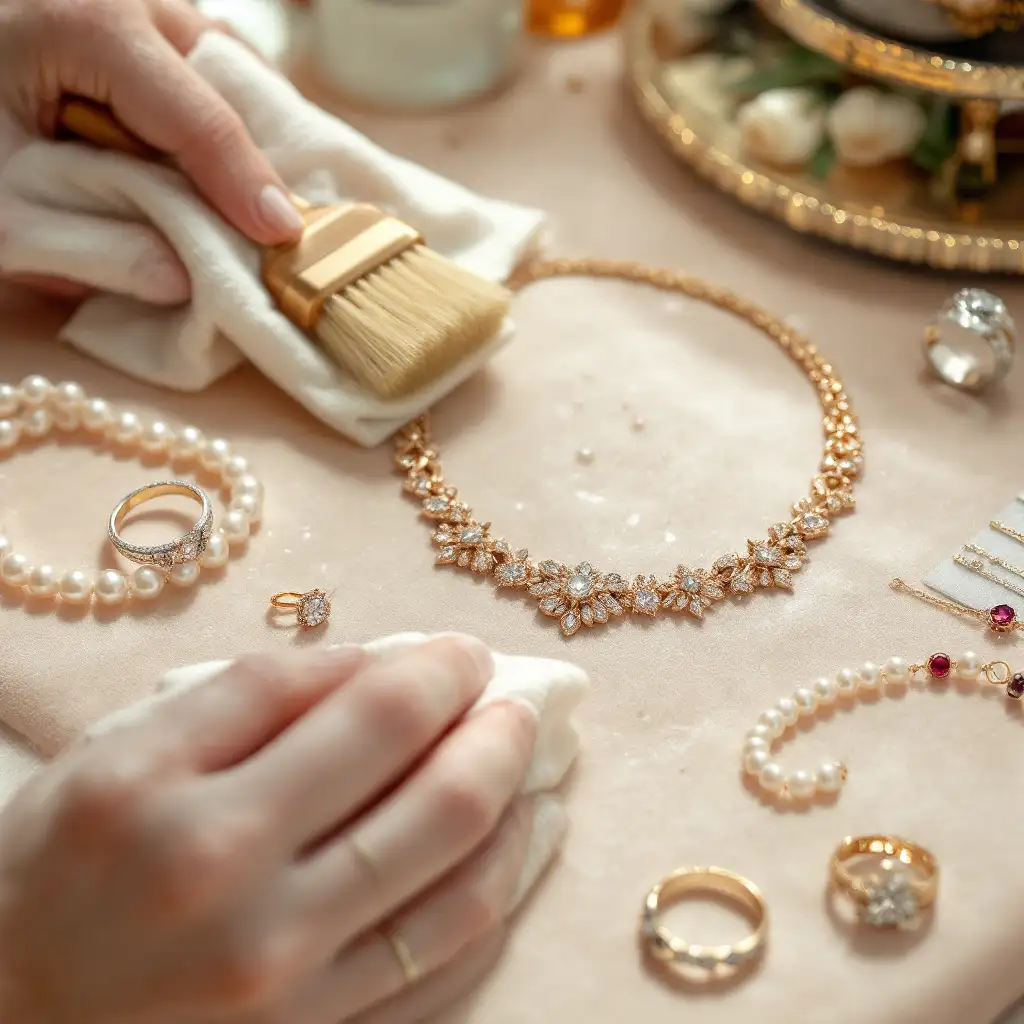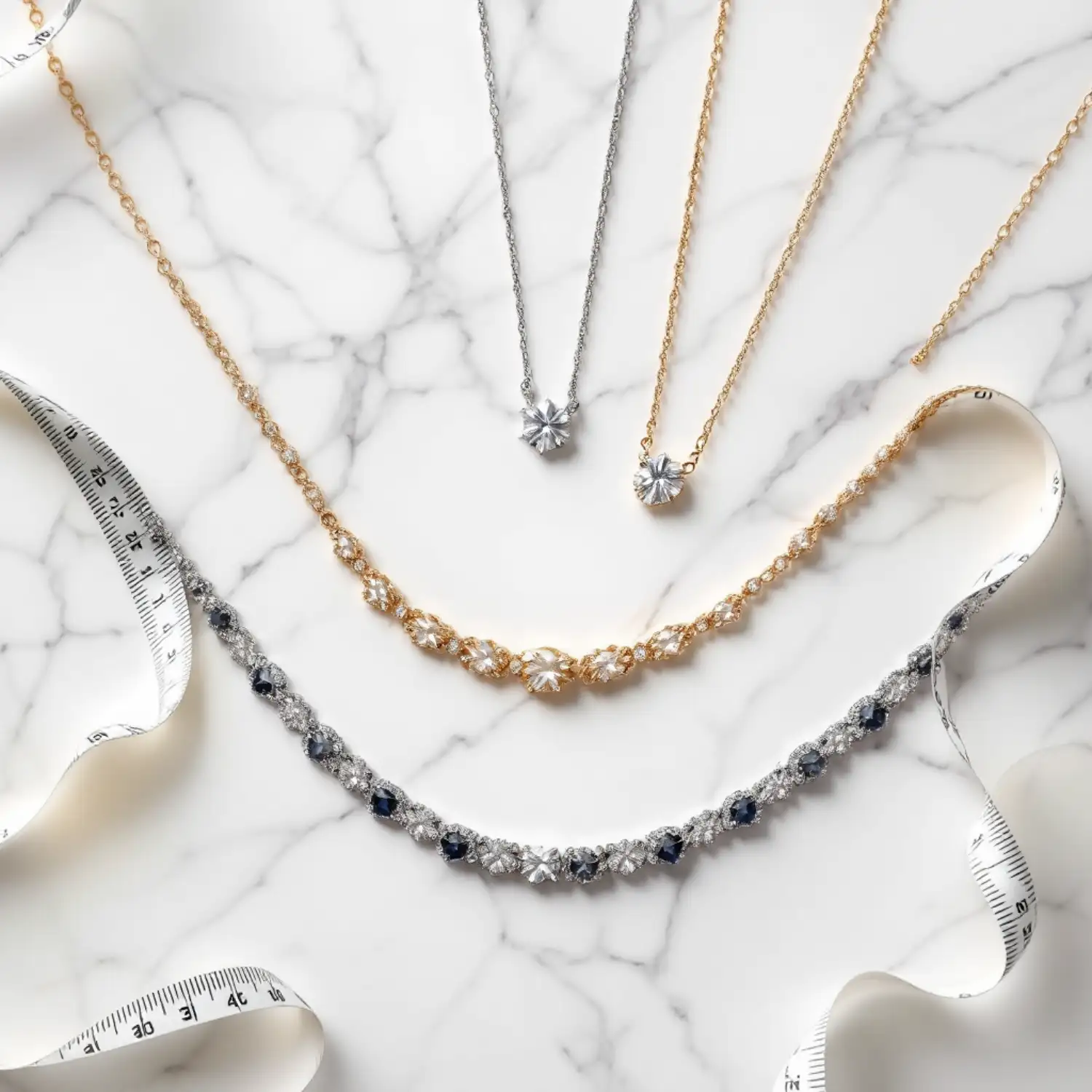Essential Jewelry Care Tips for All Your Precious Pieces
Want to keep your favourite gems looking brilliant for years to come? Taking care of your jewelry isn’t all about tidying up; it’s about protecting your pieces, preserving their value and honoring your beloved collection. Whether you’re tending to everyday rings, blinding diamond earrings or heirloom necklaces that have been handed down through generations, this guide will break down the science of how to care for jewelry.
Finding, or giving, the perfect piece of jewelry is only the beginning: We’ll arm you with practical, proven tips for how to care for every type of jewelry, from delicate gold chains to glittery gemstone rings. Discover how to clean your jewelry properly and safely, the best storage solutions to minimize scratches and tangles and proactive steps you can take to avoid damage. Knowing these tips on how to care your jewelry will help you keep your pieces looking their best and help your jewelry become a piece you will treasure for years to come. So buckle up and learn how you can keep that collection of yours sparkling shine.

Why Jewelry Care Matters
Your jewelry is more than a finishing touch. It’s a statement, an investment, and, in many cases, a cherished memory. Without the right care, even the highest-quality gems and metals can lose their luster or suffer preventable damage. Think of these jewelry care tips as small habits that promise longer-lasting brilliance.
The Basics of How to Care for Jewelry
Keep It Clean (But Not Too Clean)
Regular cleaning is a must. Sweat, lotions, perfumes, and daily grime can dull gemstones and corrode metals faster than you’d think.
Simple Cleaning Routine:
- For gold, platinum, and most gemstones: Use a bowl of lukewarm water with a drop of mild dish soap. Gently brush with a soft-bristled toothbrush. Rinse and pat dry with a lint-free cloth.
- For pearls and delicate stones: Wipe with a clean, damp cloth. Avoid soaking, as water can weaken silk threads or damage porous stones like opals and turquoise.
- Commercial cleaners: Only use those recommended for your jewelry type, and never mix chemicals.
How often should you clean your jewelry?
- Items worn daily (like wedding bands or favorite studs): Clean every 2-3 weeks.
- Special occasion pieces or those rarely worn can be cleaned monthly or after use.

Store Jewelry Properly
Clumping pieces together is a recipe for scratches and tangles. Learning how to care for jewelry starts with safe storage.
Jewelry Storage Tips:
- Store each piece separately in a soft pouch or a lined jewelry box.
- Keep necklaces clasped and lay them flat to prevent knots.
- Pearls, amber, and opals benefit from slightly humid conditions. Store them away from heaters and direct sunlight.
- For silver jewelry, use anti-tarnish strips or bags to minimize darkening.
If you’re looking to expand your jewelry box, check out these 7 Essential Buying Custom Jewelry Tips to find the perfect new addition.
Know When to Take It Off
While many designs are made for frequent wear, most jewelry simply isn’t built for everything.
When to remove jewelry:
- Before swimming (chlorine and saltwater can damage metals and some stones)
- During workouts (sweat and impact can tarnish, loosen, or scratch jewelry)
- Gardening, cooking, or cleaning (household chemicals and dirt don’t mix well with fine jewelry)
- Sleeping (to avoid unnecessary tension, bending, or breakage)
Mind Your Metals and Stones

Every metal and stone type has its quirks. Understanding these nuances is key to jewelry care.
Gold:
- Less likely to tarnish but still prone to scratches.
- Clean with mild soap and water.
- Avoid abrasive cloths or harsh chemicals.
Silver:
- Tarnishes over time, especially when exposed to air.
- Polish regularly with a soft silver cloth.
- Store with anti-tarnish strips.
Platinum:
- Strong, but scratches can develop a patina (some love this unique finish).
- Professional polishing restores a high shine.
Gemstones:
- Diamonds, sapphires, and rubies are durable but still vulnerable to hard knocks.
- Opals, emeralds, and pearls are porous or soft; always treat them with extra care, using only recommended cleaners and minimizing water exposure.
Advanced Jewelry Care Tips
Schedule Annual Checkups
Jewelry benefits from regular professional attention. Jewelers can inspect prongs, clasps, and settings, catching issues before they turn into heartbreak.
What to expect:
- Inspection of gemstones and settings
- Ultrasonic or steam cleaning (for items that can handle it)
- Recommendations for repairs or restoration
Avoid DIY Repairs

Attempting to reset a loose stone or repair a clasp at home is rarely successful and often causes more harm. Always entrust repairs to certified jewelers.
Rotate and Rest Your Jewelry
Wearing the same piece every day increases its exposure to wear and tear. Give your favorites a break now and then. This rotation not only preserves the pieces but also helps you rediscover forgotten gems in your collection.
Watch Out for Everyday Hazards
Household chemicals, beauty products, and certain foods (like citrus) can dull or damage jewelry. Apply perfumes, lotions, and sprays before accessorizing, and wash your hands before putting your pieces on.
Special Considerations for Different Jewelry Types
Caring for Heirloom and Antique Jewelry
Older pieces often contain softer metals or delicate construction.
- Always store separately in a soft cloth.
- Avoid ultrasonic or steam cleaning (these can destroy vintage settings or loosen adhesives).
- Have them checked and professionally cleaned by a jeweler experienced with antiques.

Preserving Fashion Jewelry
Costume pieces require gentle handling, as plating can wear off, and glue-set stones may loosen with excess moisture.
- Wipe after wearing to remove skin oils and residue.
- Store in a dry, cool place.
Protecting Watches
Water, magnetism, and shock are the enemies of fine watches.
- Remove watches before heavy activities.
- Wipe with a soft cloth after use.
- Service mechanical watches every 3-5 years.
Traveling with Jewelry
Invest in a padded travel case with dedicated slots for rings, earrings, and necklaces.
- Avoid bringing irreplaceable or sentimental pieces on trips unless absolutely necessary.
- Use a discreet pouch to carry jewelry in your hand luggage.
Essential Jewelry Care Kit
Having a few essentials on hand makes upkeep simple:
- Soft-bristled brush (baby toothbrush works great)
- Lint-free polishing cloth
- Mild dish soap
- Jewelry pouches or anti-tarnish bags
- Travel jewelry case
Common Jewelry Care Myths
- Myth: Toothpaste and baking soda are safe for cleaning jewelry.
Fact: These are abrasive and can scratch metals and stones.
- Myth: All gemstones can handle ultrasonic cleaning.
Fact: Stones like pearls, opals, and emeralds can be damaged by ultrasonic cleaners.
- Myth: Frequent cleaning wears jewelry out.
Fact: Gentle, appropriate cleaning extends the lifespan of jewelry.
Keeping Your Collection Radiant
Taking a little extra time to learn how to care for jewelry pays off in style, confidence, and preserving memories. Regular cleaning, proper storage, and mindful wear not only extend the life of your collection but also keep your cherished pieces ready to shine for every occasion.
If your collection includes treasured heirlooms or unique designs, consider building a relationship with a trusted jeweler for annual checkups. And for daily wear pieces, incorporate these jewelry care tips into your routine to make sure every sparkle counts.
Follow Regal Studio Jewelry on Instagram for the latest trends and collections!




